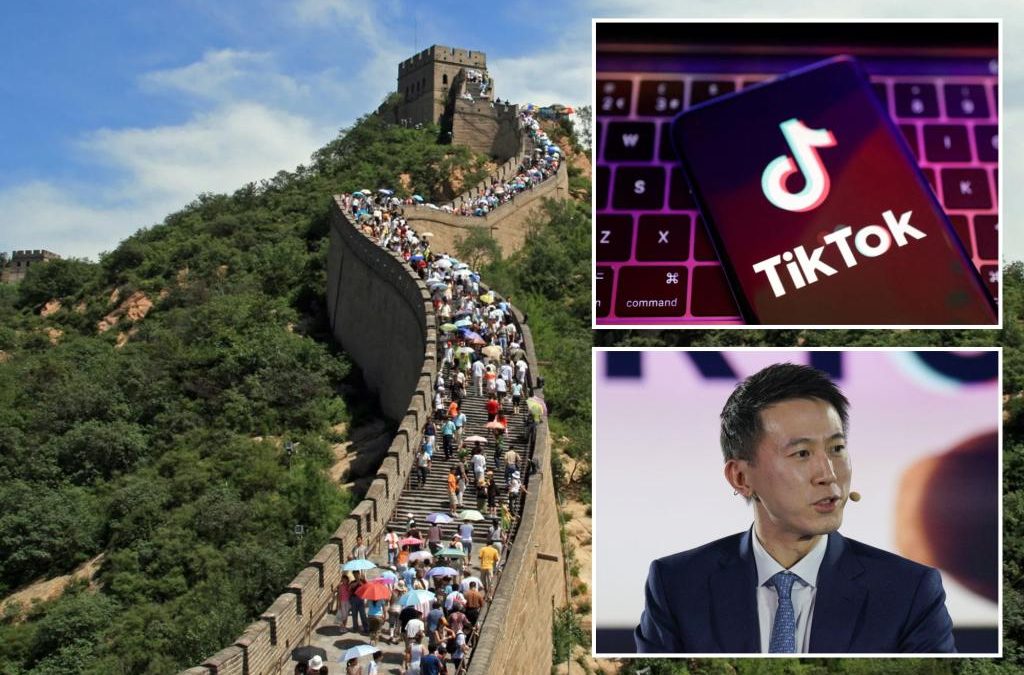TikTok has flooded millions of Europeans with ads from Chinese state propaganda outlets on topics like COVID-19 and tourism in the troubled Xinjiang region, according to an analysis of a recent ad library conducted by Forbes.
The ads echoed messages pushed by China state media, including one that touted Xinjiang as a sought-after tourist destination by showing adorable cats playing on the Great Wall of China, which stretches into Xinjiang.
However, it’s been reported that China’s Xinjiang region arrests and detains over a million Muslin Uyghurs.
Another advert that ran on TikTok as recently as last week featured a vlogger who accused Western media of lying about the Chinese government’s human rights abuses.
Forbes also found political ads featuring an academic criticizing US and European resistance to China’s Belt and Road Initiative, massive global infrastructure push that aims to build railroads, highways, energy pipelines and other arteries linking the country with Europe, Africa and other parts of Asia.
TikTok shared the advertising-based database on July 20, and Forbes found that as of Wednesday, more than 1,000 ads from Chinese state media outlets have run on European users’ feeds since October 2022.
The advertisements came from forums like The People’s Daily, the official newspaper of the Central Committee of the Chinese Communist Party, and Beijing-based television network CGTN, which is controlled by the same committee.
The ad library showed that millions of users across Austria, Belgium, the Czech Republic, Germany, Greece, Hungary, Italy, Ireland, the Netherlands, Poland and the United Kingdom have seen these ads.
Data for the United States, Canada, Australia and other countries outside of Europe was not yet available on the database.
References to Xinjiang appeared in 92 of 124 adverts promoted by one Chinese state propaganda outlet’s social media account, according to Forbes.
An ad from March sponsored by China News International showed a man doing a traditional dance and was captioned “Xinjiang is a good place!” the outlet reported.
And in yet another, a CGTN host visited an elementary school in the county of Pishan in Xianjiang, where Australian authorities have located as many as six detention centers where prisoners are reportedly forced into labor.
Reports of unjust arrests where Uyghur men and women are chained to pipes in jail cells for days and denied proper healthcare led British lawmakers to approve a parliamentary motion declaring that the Asian country’s policies against its Uyghur minority population amounted to genocide and crimes against humanity.
However, the motion is non-binding and does not compel the British government to act.

The ads don’t align with what’s stated on the FAQ page for TikTok’s ad library, which states that the app “does not show political or election ads on the platform.”
“You will not be able to find ads of political nature in the Commercial Content Library,” it adds.
According to TikTok’s ad policies, the short-form video-sharing platform also prohibits advertising about social issues, elections and politics, though they note that “government entities may be eligible to advertise if working with a TikTok Sales Representative.”
Representatives for the ByteDance-owned company did not immediately respond to The Post’s request for comment.
However, TikTok spokeswoman Jamie Favazza told Forbes that the app didn’t categorize Daily, Global Times and other state-controlled media outlets as government agencies, so the exception that these official bodies would receive does not apply.
The Post has also sought comment from The People’s Daily, CGTN and China News International.
US government officials have long warned that TikTok gives the Chinese Communist Party “supreme access” to to all user data.

Critics have alleged that China can use the platform to snoop on the more than 150 million users in the US.
In May, Montana Gov. Greg Gianforte signed legislation to ban the Chinese-owned TikTok from operating in the state as of Jan. 1, 2024, making it the first state to ban the video app.
Source




